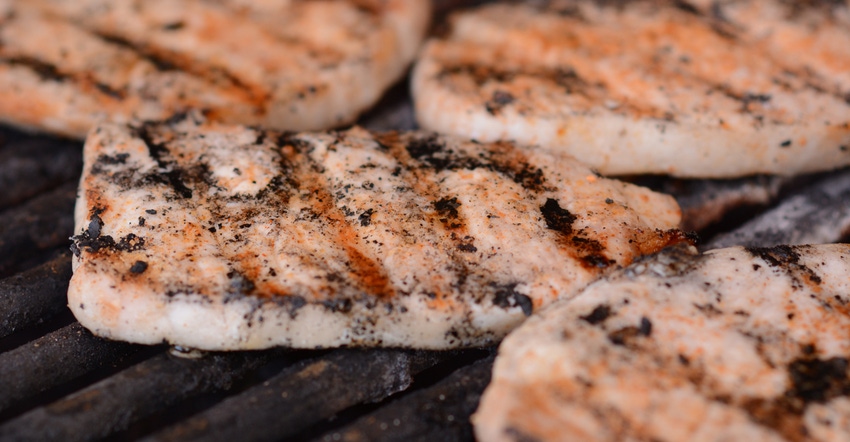
Every grain farmer favors higher corn and soybean prices, but what are the consequences for the U.S. meat industry? Gretchen Kuck, University of Illinois ag and applied economic graduate student, says meat consumption could stay constant or decline slightly, and there’s been a shift in consumption among meat categories: beef, pork and chicken.
Kuck and Gary Schnitkey, U of I ag economist, studied U.S. meat consumption recently and discovered some surprising correlations between meat consumption and ethanol production.
From 1999 to 2020, meat consumption averaged 252 pounds per person. Plus:
Per-person meat consumption remained stable from 1999 to 2006.
Consumption declined from 2007 to 2013, resulting in a low of 235 pounds of meat consumed per person in 2014.
Consumption increased from 2015 to 2019 and reached 264 pounds per person in 2020.
And two points within the studied time frame affected the economy and, in turn, the overall meat consumption rate per person: Ethanol production from 2006 to 2013 and low corn yields from 2010 to 2012 led to higher corn and soybean prices. Plus, during the Great Recession of 2008 meat consumers had lower income and less money to spend on meat.
Looking ahead, the onset of the pandemic and economic conditions in 2020 could also play a role in meat consumption again, Kuck says. Predictions indicate leveling off or a slight decline in meat consumption moving forward.
A shift in meat consumed
Let’s face it, consumers can feel the effects of high commodity prices when purchasing meat, Kuck says. So, consumers have shifted their consumption based on price, among other factors.
Here’s how per-person consumption has changed from 1999 to 2020:
Beef. 97 pounds to 83 pounds
Pork. 68 pounds to 67 pounds
Chicken. 89 pounds to 112 pounds
Why the decrease in beef consumption and increase in chicken consumption?
“There are a lot of reasons behind that one, including cost. Chicken is the least expensive animal protein that we looked at to purchase at the retail cost,” Kuck says. “And also, a lot of health, environmental animal safety concerns go into that [purchase decision]. So, there’s probably some consumer sentiment there behind the switch.”
Future impact
And the shift in consumption affects grain farmers.
Grain farmers want higher commodity prices and yields, Kuck says. But with chicken consumption and commodity prices on the rise, it may make more financial sense for livestock producers to switch from beef production to chicken production.
Look at it this way: To feed chickens, it only takes 2 pounds of feed for 1 pound of gain compared to cattle, which need 6 pounds of feed for 1 pound of gain, she adds. Plus, it would keep up with the shift toward more chicken consumption.
So, if producers are feeding more chickens than cattle to meet the recent shift in meat consumption, U.S. meat production won’t likely drive increased corn and soybean usage, Kuck concludes. Instead, there will be more need for meat exports to increase use of these commodities.
About the Author(s)
You May Also Like






